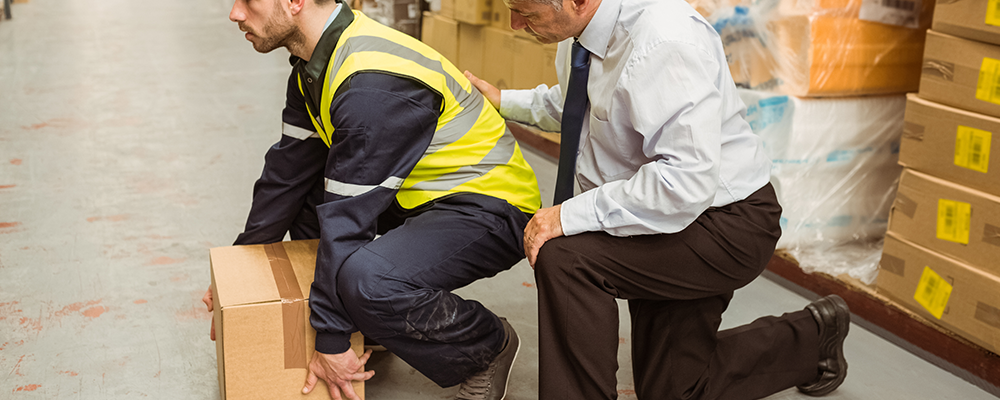
Like a key in the ignition, manual handling is one of the most obvious yet important aspects of good health and safety in the workplace. After all, poor safety systems can have serious repercussions for both the injured party and the employer.
Whilst this might be the case, manual handling remains responsible for over a third of all workplace injuries.
These include work-related musculoskeletal disorders (MSDs) such as pain and injuries to arms, legs and joints and repetitive strain injuries of various sorts.
It is important, then, that we get it right before something goes wrong.
What activities does manual handling cover?
When we talk about manual handling within the context of safety and related regulations, we are typically referring to a wide variety of activities including:
- Lifting
- Lowering
- Pushing
- Pulling
- Carrying
When any of these tasks are not carried out appropriately the risk of injury is always present.
Is manual handling really important?
Just as cocoa is a key ingredient in chocolate, manual handling is a key ingredient in safe workplaces. Get the mixture wrong and both employee and employer are left with sour tastes in their mouths.
Risks in the workplace are fuelled by a variety of factors including heavy manual labour, awkward postures, repetitive movements of arms, legs and back or previous/existing injuries.
Given that manual handling incidents can occur almost anywhere in the workplace, it is imperative that you control the risks and put adequate measures in place.
Actions to take
Employees should avoid manual handling in the workplace as far as is practical. The reality is, of course, that some load handling tasks just can’t be avoided.
In such instances, the employer is duty bound to assess the risks of that particular task and lock sensible health and safety measures in place to prevent and avoid injury.
When it comes to lifting activities, always take into account:
- Individual capability
- The nature of the load
- Environmental conditions
- Training
- Work organisation
And, in the event that you need to lift something manually:
- Decrease the amount of twisting, stooping and reaching
- Avoid lifting from floor level or above shoulder height – especially with heavy loads
- Adjust storage areas to minimise the need to conduct such movements
- Factor in how you can minimise carrying distances
- Assess the weight to be carried: can the worker move the load safely? Do they need help? Can the load be broken down to smaller components?
If you need to use lifting equipment:
- Take into account whether you can use a lifting aid such as a forklift truck, electric or hand-powered hoist or a conveyor
- Think about storage as part of the delivery process – it might be that heavy items could be delivered directly, or closer, to the storage area
- Reduce carrying distances where possible
Related reading:
- How do I conduct a fire risk assessment?
- Fife Council fined £24,000 over gas leak
- Employee prosecuted after striking co-worker with digger bucket
- HSE promotes ‘sensible risk’ in local government
- CSB calls for greater regulation of reactive chemicals
- Press Release: University of Hull Processes Safety With RTS
- Free personal protective equipment training for your site


